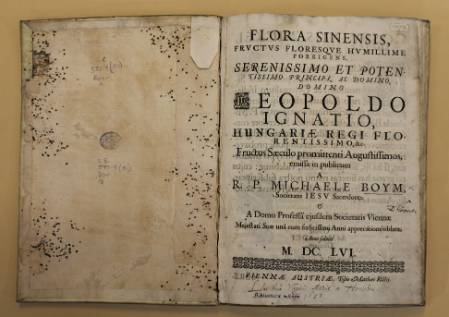Flora Sinensis, fructus floresque Humillime Porrigens, ... &c. / R. P. Michaele Boym
Matthaeus Rictius, Vienna, 1656.
The Flora Sinensis is one of the rarest and earliest European works on the natural history of China. It was published in Vienna in 1656 by the Polish Jesuit missionary Father Michael Piotr Boym (1612-1659), who spent over a decade in China as a successful missionary scientist.
Boym first travelled to China in 1643, after the fall of the Ming dynasty and the establishment of the new Qing dynasty, to study, promote Christianity and introduce Chinese science to Europe. However his diplomatic mission to convert the court of the last Chinese ruler of the Ming dynasty to Christianity was seen as a threat to the relations with the Manchus, and in 1651, upon his return to Europe, he was placed under house arrest in Goa. Boym escaped and travelled back to Europe: to Venice, and then Lisbon. In 1656 he returned to China to continue his work, but died three years later in the province of Kuang si.
During his travels he corresponded and reported on the various flora, fauna and customs of the numerous countries through which he travelled. An excellent cartographer, Boym also prepared many maps of mainland China and South-East Asia. All of his efforts contributing greatly to Sinology (the study of China and Chinese topics).
The Flora Sinensis remains his best known publication. It contains seventeen botanical plates of cultivated fruits of south-eastern China, five zoological plates of animals (including a hippopotamus!) and a plate depicting a Chinese stele (an inscribed monument). For each of the plates Boym gives the names of the species in both Chinese and Latin. He also provides an accurate description of each plant, including their medicinal properties, in the Latin text that accompanies each plate. Originally published uncoloured, hand-coloured copies such as this one are of great rarity.
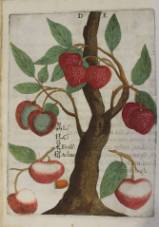 |  |  |
Lychee (Li-Ci, Lum-yen) | Rhubarb (Rhabarbarum) | Pineapple (Fan-Po-Lo-Mie) |
 | 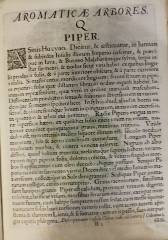 |  |
| Pepper (Piper) | Latin text description of Boym's accompanying Pepper illustration | A stylised leopard |
Boym's published works were influential and frequently cited by other authors who wrote about China, including Athanasius Kircher's 1667 publication titled China monumentis in which similarities in the plates can be seen. It is interesting to note the anthropomorphic (human-like) features that the animal illustrations have been given.
 | 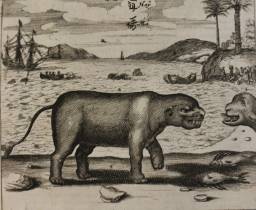 |
| Boym's hippopotamus | Kircher's hippopotamus |
 | 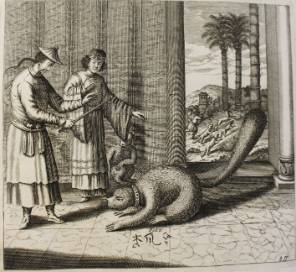 |
| Boym's squirrel-type animal chasing a turtle | Kircher's squirrel-type animal |
The NHM Library copy is bound in an old vellum binding which has warped quite significantly overtime due to its age and sensitivity to temperature and humidity. However the quality of the paper remains excellent, considering it is such an old book. That said, the numerous tiny holes scattered over the front and inside board look like they may have made a tasty lunch for an insect at some point .....



